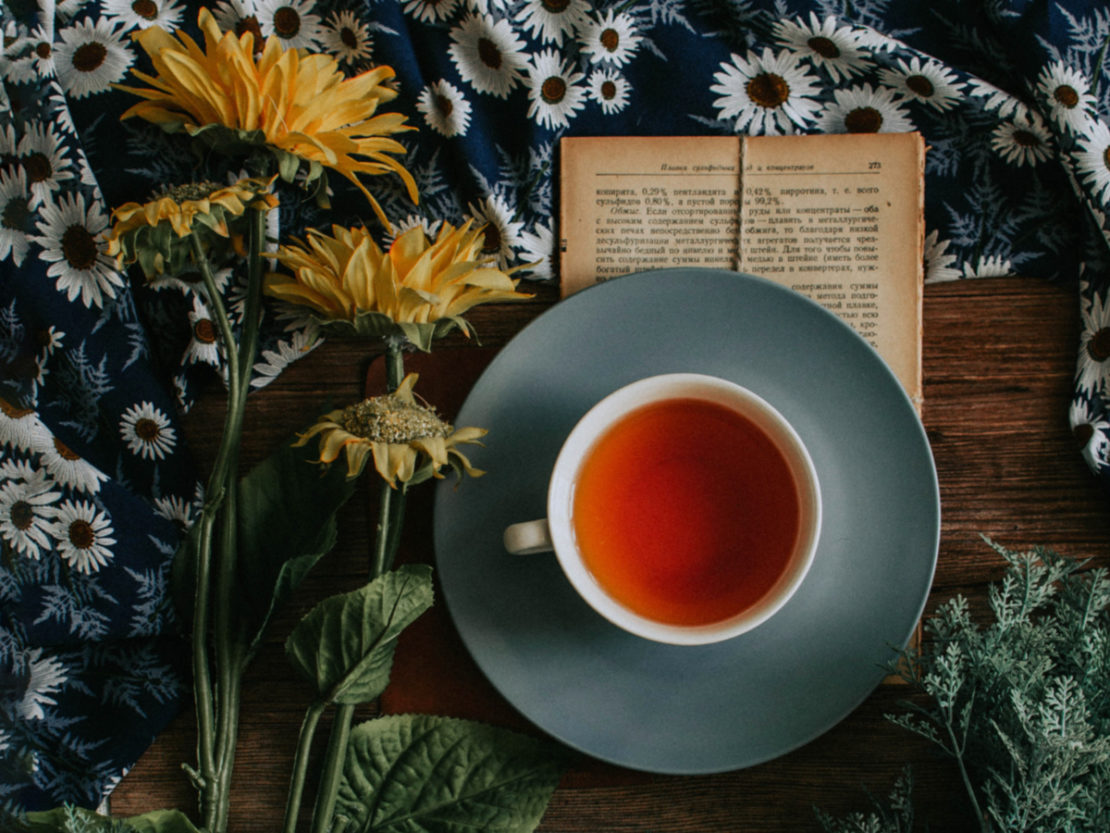
5 Herbal Insomnia Options For Better Sleep
If you suffer from insomnia, there are effective, herbal insomnia options available that may help to promote peaceful slumber. Read on to explore how diet and lifestyle changes, as well as herbs, can benefit your sleep health and support you in achieving a good night’s rest. We’ll even share a luxurious bath soak and a sleepy tea recipe that you can try when you’re feeling restless!
Quality Rest Is Important
Consistent, restful sleep is vital for maintaining a healthy, balanced life.
While sleep may seem like a time when the mind and body are simply shut off, our bodies undergo deep and active rejuvenation when we rest. During sleep, the body repairs itself at a cellular level, and hormones that mend tissue and balance energy levels are released as the heartbeat and breathing fluctuate, regulating the body’s inner rhythms (Maas, 2001).
While the amount of sleep a person needs varies depending on their age and constitution, it is generally accepted that 7-8 hours of uninterrupted sleep is needed for the average adult to feel well rested, while children should have 10 hours, and infants sleep upwards of 16 hours per day (National Institutes of Health, 2018). That said, some people do well sleeping less while others need a little more sleep.
Rather than fretting about the exact number of hours you sleep, consider whether you fall asleep without too much delay, don’t wake up frequently, and feel rejuvenated after your night’s rest.
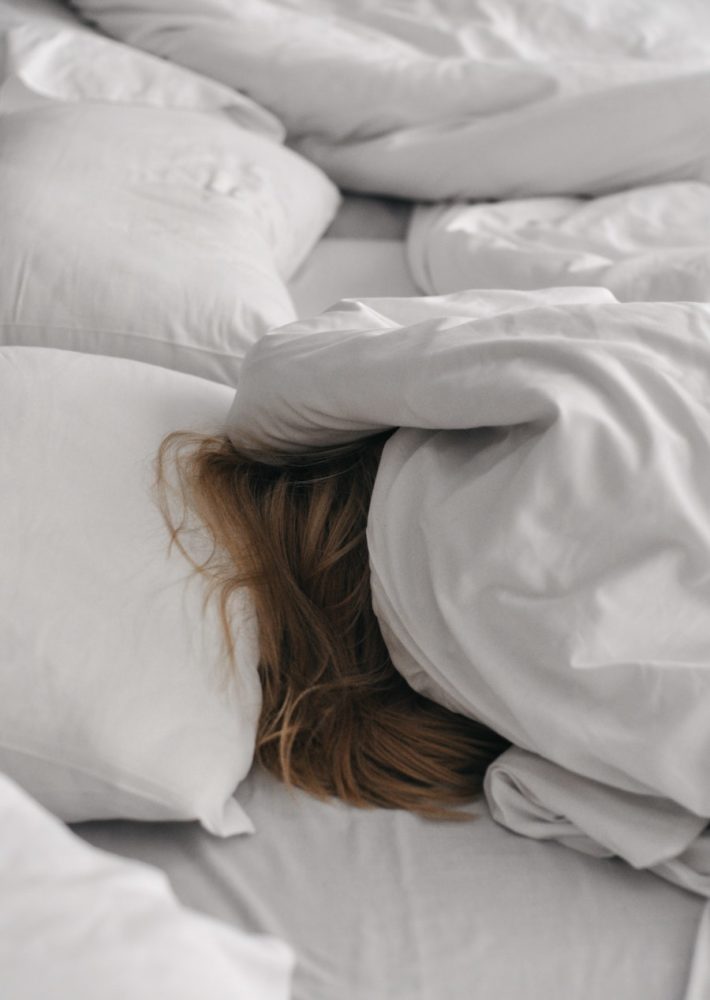
For all too many, the part of our daily cycle which should be met with ease, comfort, and renewal is instead fraught with the frustration of unrest. Potentially 49% of American adults are suffering from insomnia—perhaps even more, as the number was on a sharp rise when the poll was taken (Gallup Organization, 1995).
Insomnia is defined by any of the following: difficulty or delay in falling asleep, poor quality of sleep (which can include frequent waking or early-morning wakefulness), or in the absence of any of these issues, a less obvious problem, not reaching deep sleep cycles (Seller, 2007).
According to sleep researcher Dr. James Maas, you may fall into this group if you relate to any of the above on a regular basis, or if you fall asleep during the day, cannot fall asleep until very late, cannot wake up in the morning, cannot stay awake early in the evening and wake up before dawn, or if you often feel too anxious, depressed, or worried to fall asleep (Maas, 2001).
Insomnia And Effects of Sleep Disturbance
Short-term sleep disruption can lead to increased stress levels, somatic pain, reduced quality of life, emotional distress, and mood disorders, as well as cognitive, memory, and performance deficits (Maas, 2001; Seller, 2007). In the long term, sleep disruption can increase the chances of health issues like heart disease, diabetes, and certain types of cancer (Medic et al., 2017).
Acute insomnia is when sleeplessness comes and goes and lasts between a few days to three weeks (National Sleep Foundation, n.d.a.). After three weeks of consistent inadequate sleep, insomnia is considered a chronic issue. When chronic insomnia is present, there is typically an underlying imbalance that should be addressed.
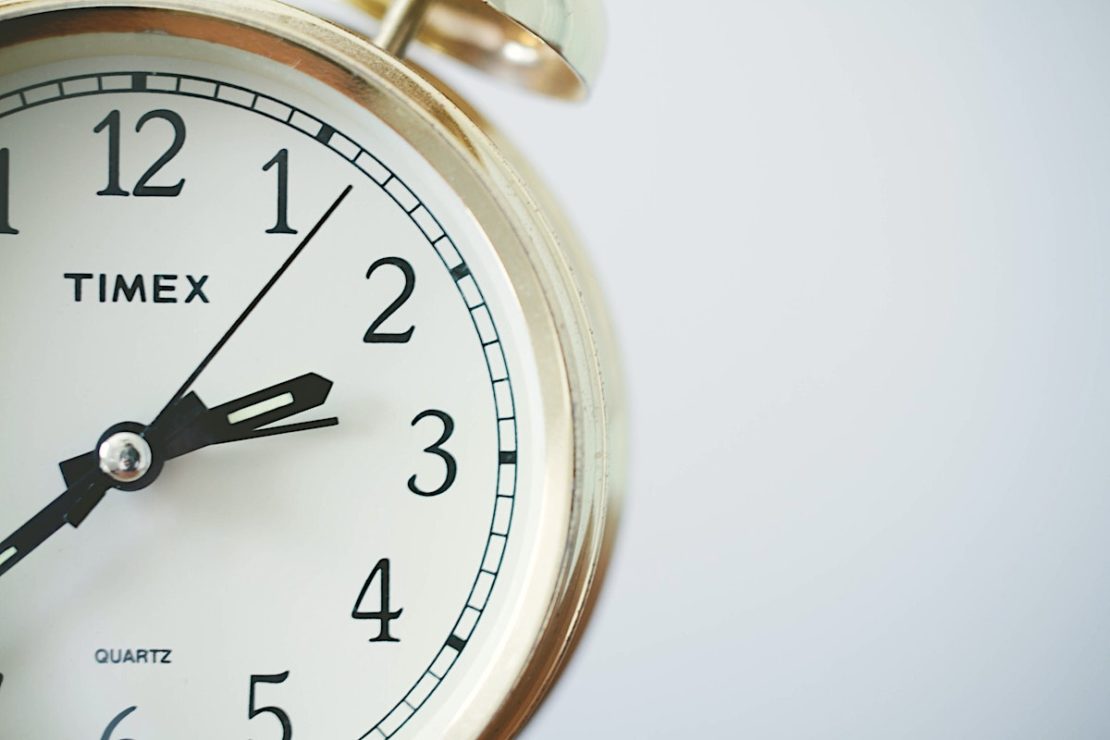
Identifying Root Causes of Insomnia
As with all matters of health, the cause of insomnia and the best approach for you to take is as unique as you are. For example, if you are unable to sleep because of pain, addressing the underlying issue that is causing the pain will likely provide the most help. However, if you are unable to sleep due to a restless mind, a different approach can be taken.
Being aware of the underlying cause of your sleep disturbances and remediating any lifestyle factors that are contributing to insomnia will increase the likelihood that you will be successful in getting a good night’s sleep. Common causes of sleeplessness include stress, anxiety, depression, changes in schedule or new surroundings, sedentary lifestyle, poor nutritional habits, illness, chronic pain, restless leg syndrome, and sleep apnea.
Once you consider the potential underlying cause of restlessness, take into consideration how long you have experienced insomnia and its associated symptoms. Acute insomnia is often very receptive to dietary, lifestyle, and herbal interventions, as is chronic insomnia. However, if chronic insomnia doesn’t respond to these natural approaches, it’s a good idea to consult with a trained clinical herbalist, naturopath, medical doctor, or another health practitioner to address the root cause of your symptoms or to rule out any underlying imbalance that could be contributing to your insomnia.
Dietary And Lifestyle Effects on Sleep
If you find yourself experiencing the symptoms of insomnia, consider how your diet and lifestyle may be affecting your ability to get a good night’s rest.
While you may know that stimulants such as caffeine, exercise, and even certain foods too close to bedtime can interrupt your sleep rhythms, you may not realize that some relaxants, such as tobacco, alcohol, and sleeping pills can lead to sleep disturbances that inhibit your ability to move into the deeper sleep cycles as well.
Eating a large meal close to bedtime can disturb your sleep patterns by keeping the digestive system active. Having a bedtime blood sugar level that is too high or too low can also hinder sleep, though sugar in evening foods will affect individuals differently (National Sleep Foundation, n.d.c.). Particular foods can also increase the release of norepinephrine and have a stimulating effect on the mind, such as those that contain higher amounts of tyramine (e.g., chocolate, bacon, eggplant, cheese, ham, potatoes, sauerkraut, sausage, spinach, and tomatoes) (Balch & Bell, 2014). Alternatively, eating foods that contain tryptophan at dinner time, such as turkey, bananas, and figs, can actually help to promote sleep (Balch & Bell, 2014). Tryptophan is the amino acid that the body uses to make serotonin and melatonin which both help to slow down mental activity and allow the body to wind down (Paredes et al., 2009).
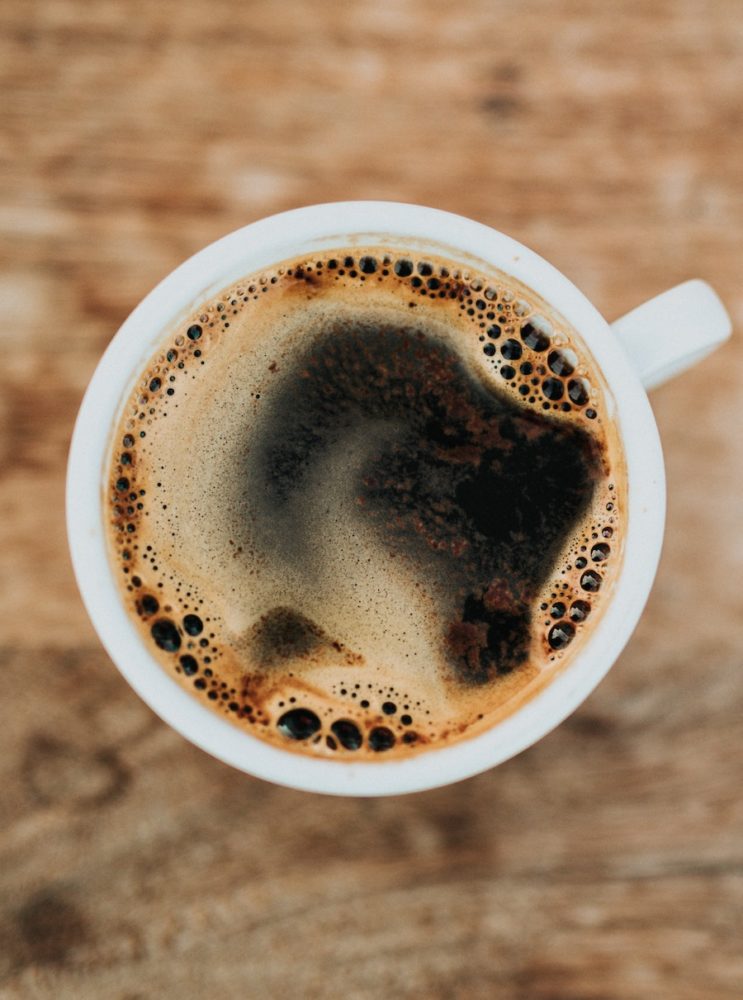
As mentioned above, even things that are initially relaxing to the body, like tobacco and alcohol and even sleeping pills when used long-term, can affect your sleep in a negative way.
Another nutritional consideration, when faced with insomnia, is ensuring that you are getting an adequate amount of magnesium in your diet. Magnesium relaxes the skeletal muscles, helping the body rest (Haas, 2006). Magnesium also plays a role in supporting deep, restorative sleep by maintaining healthy levels of gamma-aminobutyric acid [GABA], a neurotransmitter that promotes sleep, and can also help insomnia that’s linked to the sleep disorder restless-leg syndrome (Breus, 2018). Some good food sources of magnesium include dark leafy greens, nettles, seeds and nuts, whole grains, broccoli, and other dark green vegetables.
Tips For Choosing Herbal Insomnia Options
Of the many herbal insomnia options available, I’ve included five herbs I recommend most to clients in my herbal practice.
While you will notice that all of these plants are considered relaxing, each one has a unique personality making it better for certain situations or certain people. If you are experiencing insomnia and looking for herbal insomnia options for support, let me encourage you to read each herb’s profile, explore your options, and find out which herb may be the best one to start with.
If you don’t achieve the results you’re looking for with one herb, don’t give up. Try a different plant or even combine two or three in an herbal formula. And remember, what works well for someone else may not be what your body needs.
It is also worth considering the type of herbal preparation that is best for you. It can be soothing to drink a cup of tea before bedtime, but if you don’t enjoy tea or don’t think you will have time to brew a cup every night, you may want to consider using a tincture instead. Tinctures are concentrated liquid extracts that are typically made with alcohol but can also be made with glycerin. You can purchase herbal tinctures locally or online, or you can make your own following this recipe from The Herbal Academy blog.
To further enhance the relaxing effects of your herbal ally, it can help to combine it with a nightly ritual to help you wind down. I’ve included more information on creating a bedtime ritual along with a couple of luxurious recipes that you can incorporate into your routine at the end of this article.
I also want to caution that the herbs shared here could potentiate the effects of sedatives. If you are taking medications, always consult with your healthcare practitioner before making any changes to your regimen.
It is also important to take into account any prescription medications you are currently taking and whether any have potential side effects which include trouble sleeping. There are some medications that may cause sleeplessness, including antidepressants as well as thyroid, weight loss, and anti-seizure medications (National Sleep Foundation, n.d.b.). It can be dangerous to discontinue prescription medications without proper medical supervision, so talk to your doctor before making any changes to your medications.
Now for the herbal goodness!
5 Herbal Insomnia Options
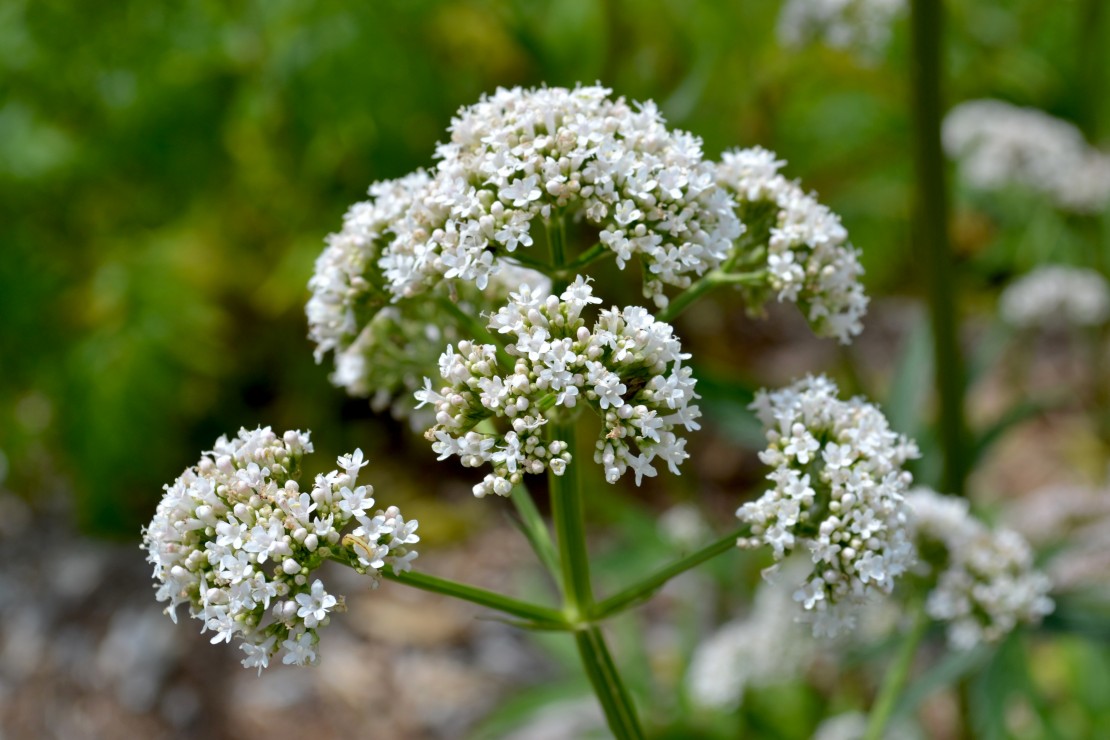
Valerian (Valeriana officinalis) Root
Valerian (Valeriana officinalis) is a well-known root that is used for its relaxing effects. It is a hypnotic nervine that is generally soothing to the anxious, sleepless mind (Pizzorno et al., 2008). I love valerian because it is typically effective at reducing the amount of time it requires for someone to fall asleep and prevents sleep disturbances without causing a groggy feeling in the morning. Additionally, valerian is useful for relaxing muscle tension (Hoffmann, 2003). The combination of its effects make it a helpful herbal insomnia option if pain or muscle spasms contribute to sleep disturbances. Any time sleeplessness is associated with feelings of being wound up with muscle tension or knots, tremors, muscle spasms or pain, I start with valerian.
It is worth noting that in rare cases valerian actually has the opposite effect, creating a stimulating response rather than a sedation response. This may in part depend on preparation method, or one’s own metabolism of certain constituents, or both. The constituents in tea and dried root differ from those in the fresh root or a tincture prepared from fresh root (Aronson, 2009). Preparations made of fresh root may work more consistently to encourage sleep, though for many preparations of dried root, such as tinctures made from dried root, and tea described below work well also.
If using a tincture, I suggest administering 40-80 drops of valerian root a half hour before bedtime and another 20 drops right before bed. Alternatively, you can enjoy valerian as a tea. If using it as a tea, I suggest using 1 tablespoon of herb covered with freshly boiled water and infused for 10-15 minutes to be enjoyed before bed.
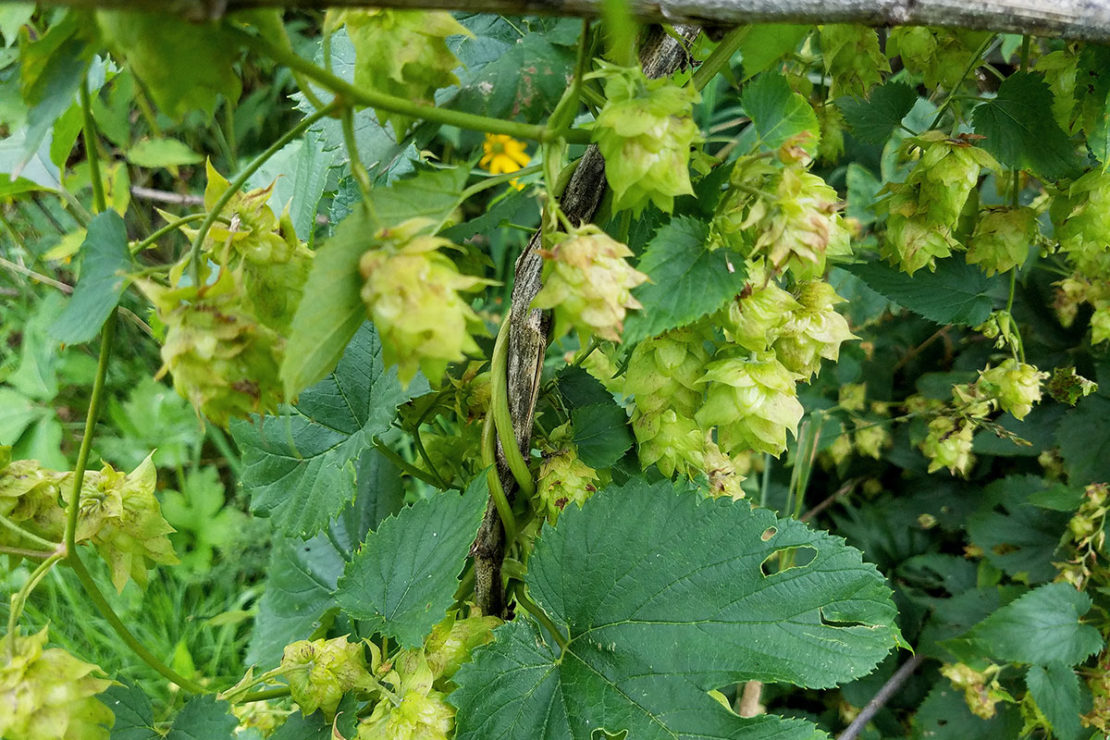
Hops (Humulus lupulus) Strobile
You may recognize hops (Humulus lupulus) as a main ingredient in many beers. While it is commonly used for brewing, hops is also used in tea or tincture form as an herbal sedative that is very effective at calming the nervous system (Hobbs, 1997). Hops is a beneficial plant when sleeplessness is caused by a worried mind, full of racing thoughts. For insomnia sufferers whose minds keep them awake at night, this herbal insomnia option may be a good choice.
As a tincture, I suggest using 20-40 drops of hops a half hour before bedtime and another 20 drops right before bed.

Passionflower (Passiflora incarnata) Aerial Parts
Another plant ally for the chronic worrier, passionflower (Passiflora incarnata) is indicated when there is an inability to let concerns go. It can be helpful when there is a high level of tension and feelings of being overstimulated. Passionflower is a relaxing nervine that is very effective at relieving nervousness, relaxing muscle tension, and soothing the restless mind (Hobbs, 1997). When insomnia is accompanied by an inability to quiet the mind and release worrisome thoughts, passionflower is my go-to herb. It is another herb whose actions on the nervous system make it effective at easing muscle spasms and nerve pain (Hoffmann, 2003). If there is nerve pain interfering with sleep, try combining passionflower with valerian root.
As a tincture, passionflower can be administered at 20-40 drops a half hour before bedtime and another 20 drops right before bed. Alternatively, I suggest brewing a tea using 1 tablespoon of passionflower with 1 cup of freshly boiled water and infusing for 10-15 minutes. Enjoy this tea warm before bedtime.
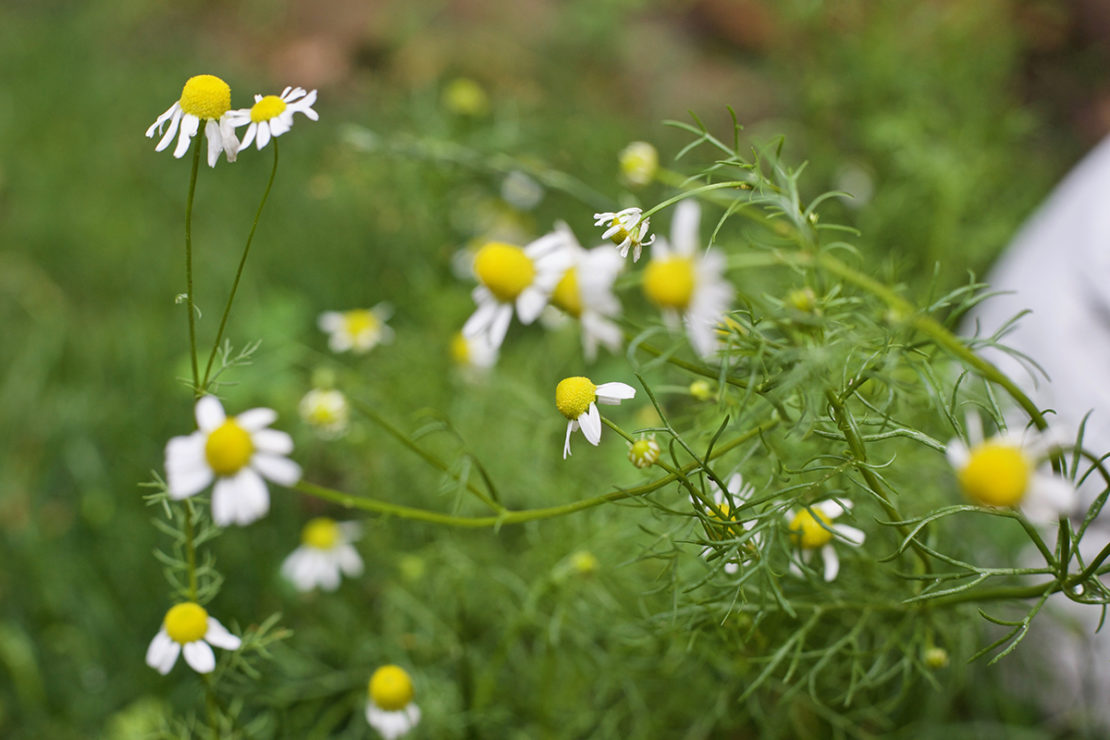
Chamomile (Matricaria recutita) Flower
Chamomile (Matricaria recutita) is a gentle and widely functional herbal ally. Because chamomile is so gentle and is generally safe for all ages, it is the herb that I reach for first when working with children or highly sensitive people. It can be used with teething infants if there are sleep disturbances associated with the pain of teething (McQuade, 1997). It is even included in the beloved children’s story, The Tale of Peter Rabbit, in which Peter’s mother puts him to bed with a dose of chamomile tea to soothe his upset stomach and frazzled nerves.
Chamomile is very soothing to digestion and can be a beneficial herbal insomnia option if sleep is disrupted by indigestion caused by worry, illness, or dietary imbalance (Hobbs, 1997).
Chamomile is part of the Asteraceae family of plants. If you have experienced an allergic reaction to other members of this family, avoid chamomile, and choose one of the other many gentle relaxant herbs.
I suggest using 20-40 drops of chamomile tincture a half hour before bedtime and another 20 drops right before bed. Alternatively, chamomile tea can be brewed using 1 tablespoon of herb covered with freshly boiled water and infused for 10 minutes to be enjoyed before bed. Please note that if chamomile is left to steep too long, it will become bitter.
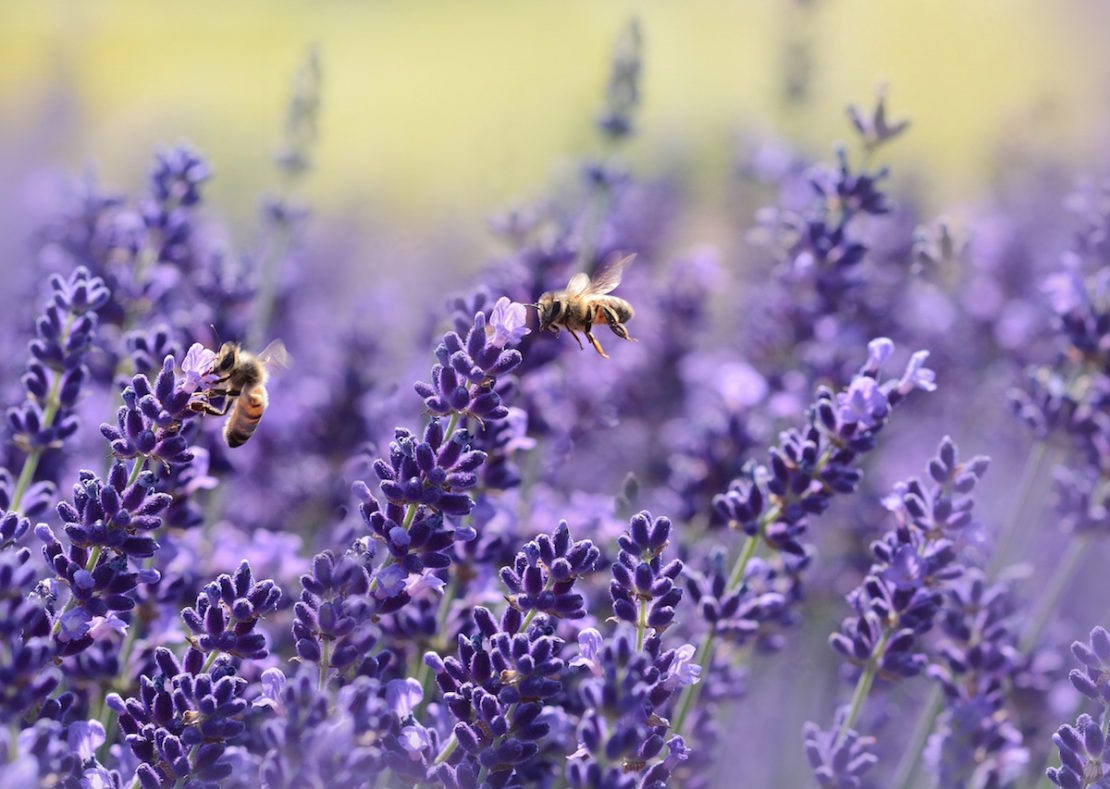
Lavender (Lavandula angustifolia) Flower
The aroma of lavender (Lavandula angustifolia) is an effective relaxing nervine that can be very helpful when you need to unwind. The volatile oil is the most active component of lavender (McQuade, 1997), so it is most effective when used as an essential oil or as a tea that has been covered while steeping so that the aromatic properties are not released. It is believed that the volatile oils of lavender act via the limbic system, particularly the amygdala and hippocampus to help reduce anxiety and promote relaxation (Koulivand, 2013).
Essential oils should not be taken internally but can be diluted and applied to the temples, a couple of drops diluted with a carrier oil and added to a bath, or used in an essential oil diffuser. It is also important to find high-quality essential oils that have not been adulterated.
When using the essential oil, add 1-2 drops to a teaspoon of carrier oil, such as grapeseed oil or olive oil, and massage it onto the temples and body as needed. Alternatively, you may add a few drops of diluted lavender essential oil to a bath (see recipe below). Lavender tea can be brewed using 1 tablespoon of dried flowers covered with freshly boiled water and infused for 10 minutes to be enjoyed before bed. If lavender is left to steep too long, it will become bitter.
Creating a Healthy Bedtime Routine
Once you choose an herb or herbal formula that feels right for you, incorporate it into a wind-down ritual. Having a bedtime routine lets your mind and body know that it’s time to fall asleep. This can cut down the tossing and turning once you lay your head on the pillow.
A good way to begin is by turning off all screens. Many people like to watch a movie or thumb through social media before bedtime, but the lights from electronic devices may interfere with your circadian rhythm and inhibit your ability to enjoy a deep slumber (Harvard Health Publishing, 2012).
A good bedtime ritual allows a space for you to turn off outside stimuli and tune in to rest. To do this, turn off all electronics and distractions. If you use your phone for an alarm, you can set it to airplane mode. Turn off all overhead lighting and use only candles or soft lamps. Once you’ve turned off outside stimuli, take a moment to review the day intentionally and lay to rest anything that may feel burdensome to your mind. It can also be helpful to actually visualize yourself placing your worries on an altar or in a recycling bin, or any other sort of visualization you like.
Having an herbal bath, enjoying a tasty tea, or having your sleep tincture by your bedside can be an enjoyable way to incorporate herbal insomnia options into your routine. Here are a couple of simple herbal recipes to inspire you.
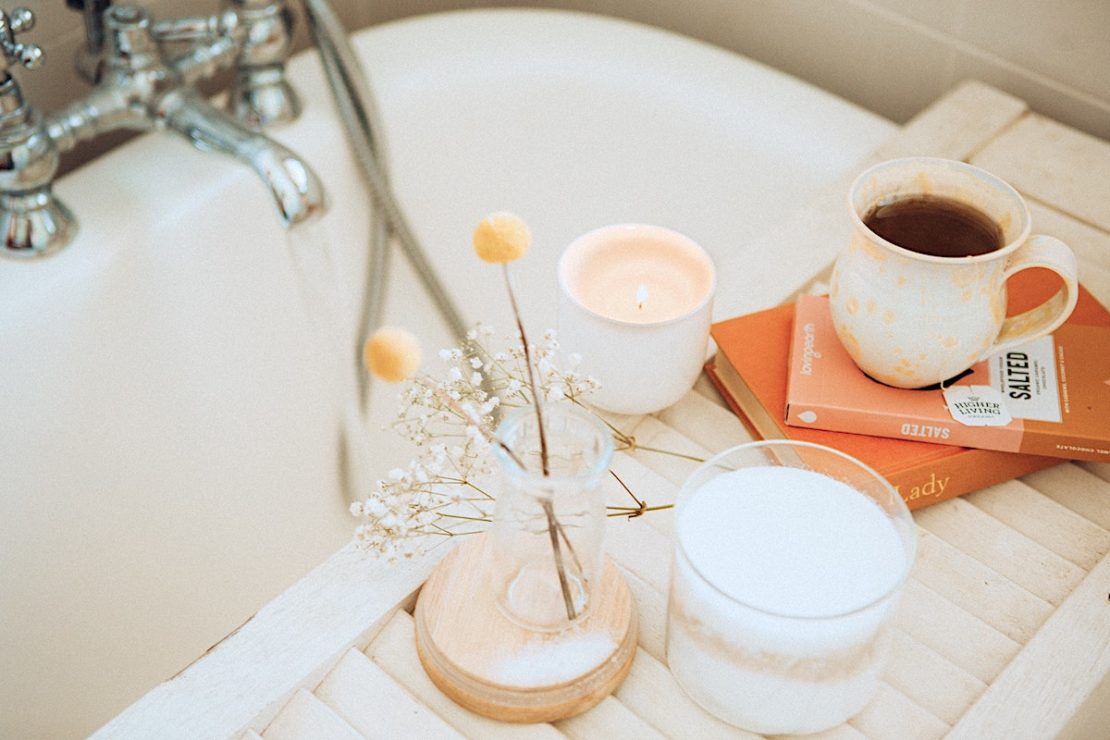
Bedtime Herbal Bath Ritual
Before you tuck into bed, try this herbal bath ritual to help ease your muscles and relax your mind.
A handful of Epsom salt
5 drops of lavender (Lavandula angustifolia) essential oil
1 ounce of carrier oil, i.e. olive oil, coconut oil, or grapeseed oil
1 quart of bedtime bath tea (1 tsp valerian (Valeriana officinalis) root, 1 tsp chamomile (Matricaria recutita) flowers, and 1 tsp passionflower (Passiflora incarnata) aerial parts)
- Add the tea into your warm bath water along with a handful of Epsom salt and your carrier oil/essential oil mixture.
- Light a candle or two, turn down the lights, and set the mood. You can add relaxing sounds or music, customizing your bedtime bath ritual to suit your personal style.
- To enhance the relaxing effect of your bath ritual, sip on some sleepy tea (recipe below) while relaxing in the bath.
- Prepare the bath tea one of two ways. You can either place 3 tablespoons of herbs in a quart-sized canning jar filled with freshly boiled water and allow them to steep for thirty minutes up to several hours, or you can place 3 tablespoons of herbs in a reusable tea bag or clean sock tied tightly and steep them in your bath as the water fills the tub.
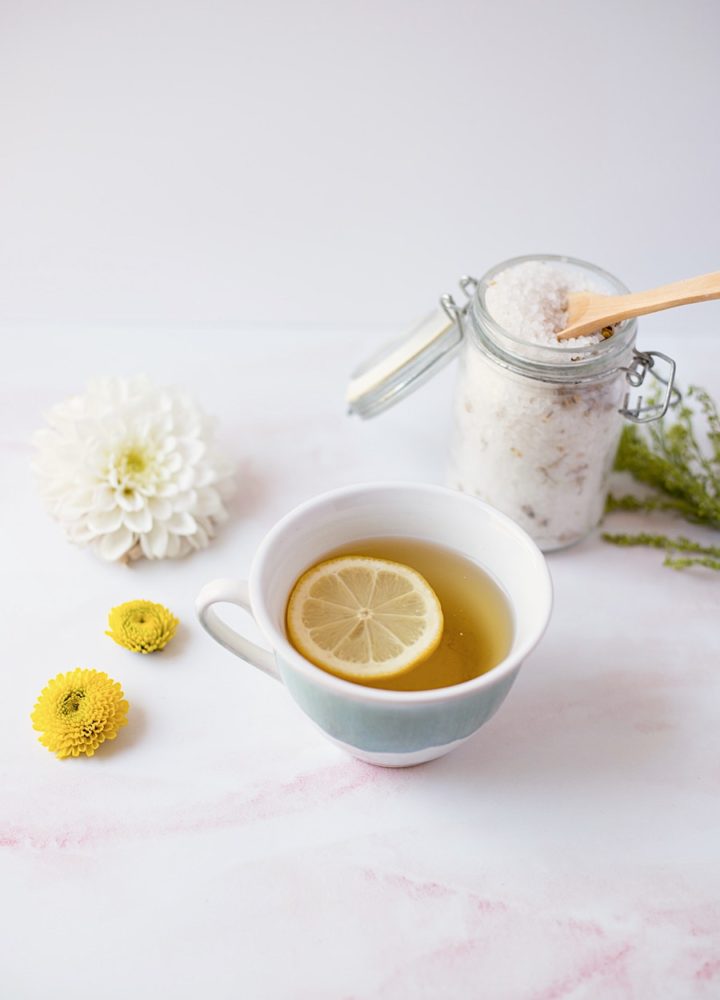
Sleepy Tea
This sleepy tea is a delicious tea to sip 30-60 minutes before bed or during an evening bath to soothe the mind and body before sleep. A helpful tip is to blend the dry, loose herbs ahead of time and store them in a clean, labeled canning jar to make this recipe even easier.
2 parts hops (Humulus lupulus) strobile
2 parts chamomile (Matricaria recutita) flowers
2 parts lemon balm (Melissa officinalis) leaf
1 part valerian (Valeriana officinalis) root
½ part lavender (Lavandula angustifolia) flowers
½ part stevia (Stevia rebaudiana) leaf
- Combine all herbs together in a clean, dry canning jar. Mix well, and label for storage. You can learn more about using herbal parts in your herbal recipes here.
- To prepare a cup of tea, use 1 tablespoon of your herb blend per 8 ounces of freshly boiled water in a mug. Cover and allow the herbs to steep for 10-15 minutes before straining the herbs from the liquid.
- Sweeten, if desired, and enjoy!
Find a Peaceful Way
Creating healthy lifestyle habits, finding a routine that suits you, and incorporating herbal insomnia options are foundational tools to set you on a path to regular sleep rhythms. It is also important to remember not to put too much pressure on yourself to do it right or to fit into the standard 7-8 hours of sleep model as this can create worry and further disrupt your ability to relax and unwind. Each body has unique needs, and creating a healthy life requires you to tune in to what your body is asking for. Ask yourself, do I genuinely feel well? What do I need? Once you have asked yourself these questions, you can base your lifestyle choices off of your answers.
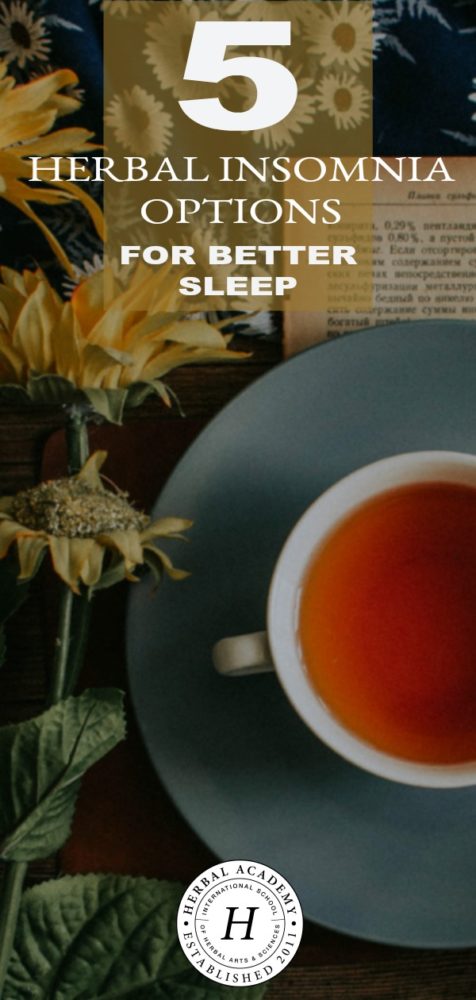
REFERENCES
Aronson, J. (Ed). (2009). Meyler’s side effects of herbal medicines. Oxford, UK: Elsevier.
Balch, P.A., & Bell, S.J. (2014). Prescription for herbal healing. Stamford, CT: Bottom Line Books.
Breus, M.J. (2018). What you need to know about magnesium and your sleep. [Blog Article]. Retrieved from http://www.psychologytoday.com/us/blog/sleep-newzzz/201805/what-you-need-know-about-magnesium-and-your-sleep
Gallup Organization. (1995). Sleep in America: A national survey of U.S. adults. Princeton, NJ: National Sleep Foundation.
Harvard Health Publishing. (2012). Blue light has a dark side. [Online Article]. Retrieved from http://www.health.harvard.edu/staying-healthy/blue-light-has-a-dark-side
Haas, E. (2006). Staying healthy with nutrition. New York, NY: Random House.
Hobbs, C. (1997). Stress and natural healing. Loveland, CO: Botanica Press.
Hoffmann, D. (2003). Medical herbalism: The science and practice of herbal medicine. Rochester, VT: Healing Arts Press.
Koulivand, P.H., Ghadiri, M.K., & Gorji, A. (2013). Lavender and the nervous system. Evidence-Based Complementary and Alternative Medicine, 2013, 681304. https://dx.doi.org/10.1155%2F2013%2F681304
National Sleep Foundation. (n.d.a.). How insomnia differs from occasional sleeplessness. [Online Article]. Retrieved from https://www.sleep.org/articles/insomnia-vs-occasional-sleeplessness/
National Sleep Foundation. (n.d.b.) How medications may affect sleep. [Online Article]. Retrieved from http://www.sleepfoundation.org/articles/how-medications-may-affect-sleep
National Sleep Foundation. (n.d.c.). Sweet dreams: How sugar impacts your sleep. [Online Article]. Retrieved from https://www.sleep.org/articles/sugar-impacts-sleep/
Maas, J. (2001). Power sleep. Fort Mill, SC: Quill House.
McQuade, A. (1997). Herbal remedies for women. Roseville, CA: Prima Health.
Medic, G., Wille, M., & Hemels, M.E. (2017). Short- and long-term health consequences of sleep disruption. Nature and Science of Sleep, 9, 151–161. https://dx.doi.org/10.2147%2FNSS.S134864
National Institutes of Health. (2013). The benefits of slumber. [Online Article]. Retrieved from https://newsinhealth.nih.gov/2013/04/benefits-slumber
Paredes, S.D., Barriga, C., Reiter, R.J., & Rodríguez, A.B. (2009). Assessment of the potential role of tryptophan as the precursor of serotonin and melatonin for the aged sleep-wake cycle and immune function: Streptopelia risoria as a model. International Journal of Tryptophan Research, 2, 23-36. https://doi.org/10.4137/ijtr.s1129
Pizzorno, J., Murray, M., & Joiner-Bey, H. (2008). The clinician’s handbook of natural medicine (2nd ed.). St. Louis, MO: Churchill Livingston.
Seller, R. (2007). Differential diagnosis of common complaints. Philadelphia, PA: Saunders Elsevier.







